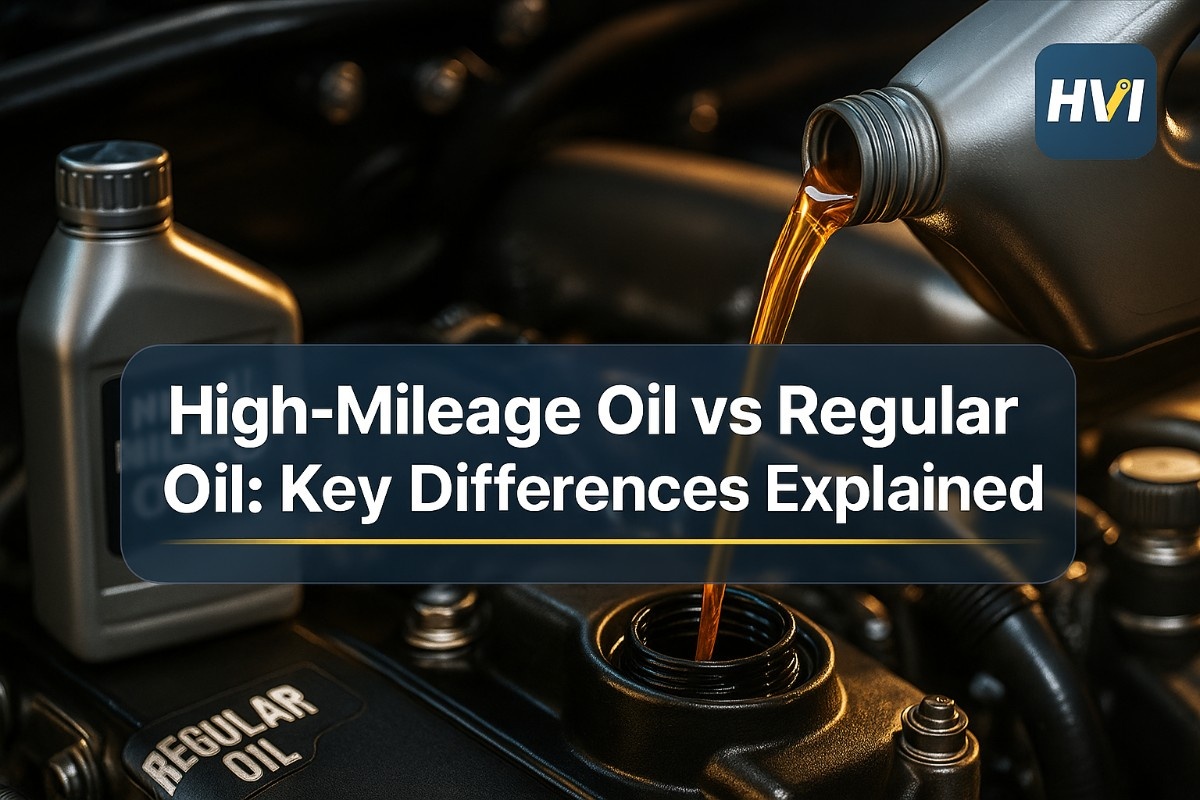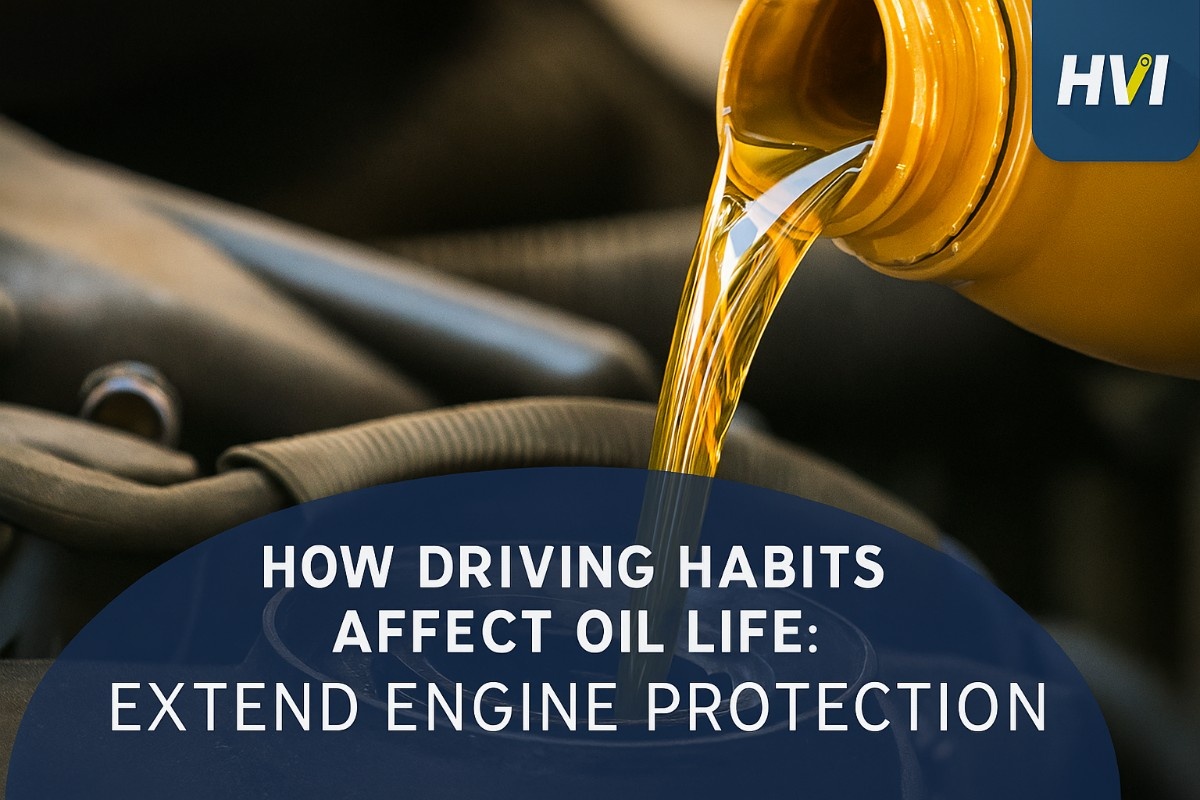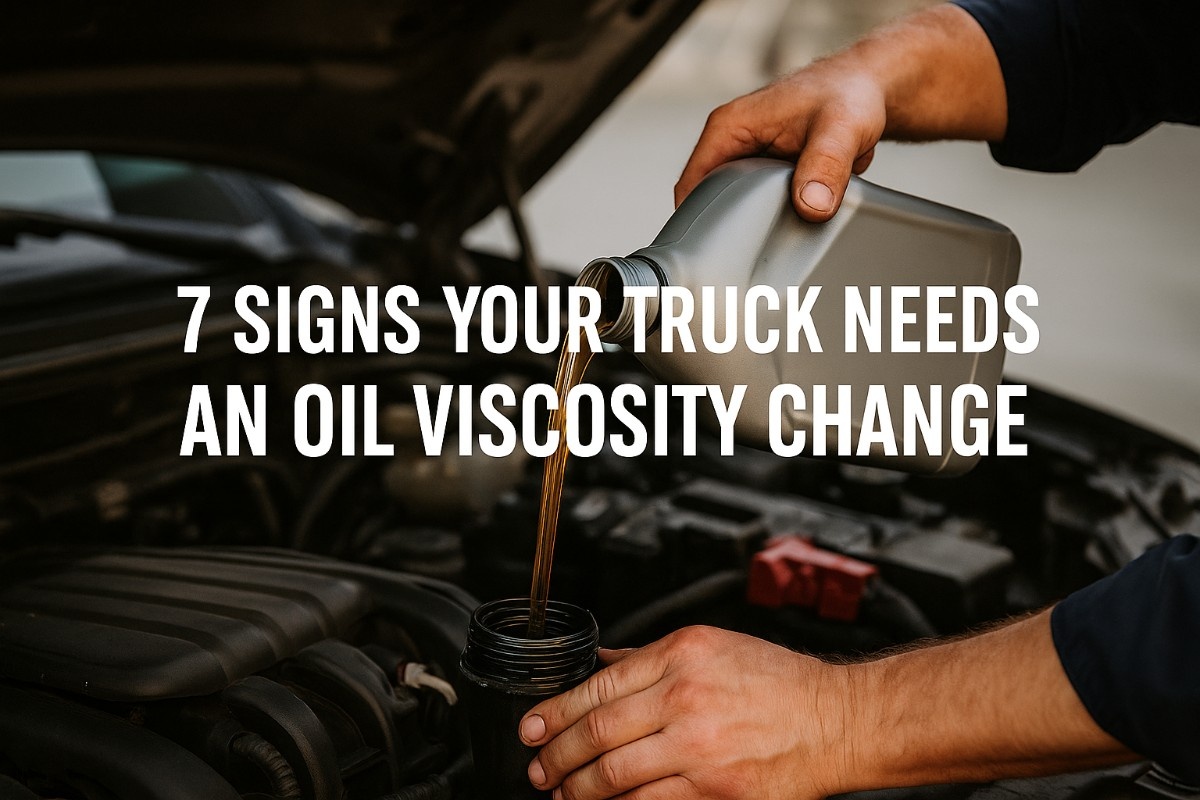Choosing between high-mileage oil and regular oil becomes critical once your vehicle crosses the 75,000-mile threshold—a decision that can extend engine life by 30% or accelerate wear if made incorrectly. With 68% of vehicles on American roads exceeding 75,000 miles, understanding this comparison directly impacts millions of drivers. Track your vehicle's mileage and maintenance needs to make data-driven oil decisions that protect aging engines while avoiding unnecessary expenses on vehicles that don't yet need specialized formulations.
High-Mileage Oil: By the Numbers
Quick Comparison: High-Mileage Oil vs Regular Oil
Best for: Vehicles over 75,000 miles
- Contains seal conditioners to reduce leaks
- Higher detergent levels for deposit removal
- Antioxidants to combat oil breakdown
- Additives to reduce oil consumption
- Costs $25-45 per oil change
Best for: Vehicles under 75,000 miles
- Standard additive package for normal wear
- Adequate protection for newer engines
- No specialized seal conditioners
- Standard detergent levels
- Costs $20-35 per oil change
Track When Your Fleet Needs High-Mileage Oil
Systematic mileage tracking ensures each vehicle gets the right oil at the right time.
What Makes High-Mileage Oil Different?
High-mileage oils aren't just marketing—they contain specific additives that address the unique challenges of aging engines. Understanding these ingredients helps you evaluate whether your vehicle needs them. For fleet-wide oil tracking, explore our maintenance management solutions.
Seal Conditioners
What They Are: Chemical compounds that penetrate and swell hardened rubber seals
Why They Matter: Aging seals shrink and harden, causing oil leaks. Conditioners restore flexibility and sealing ability, reducing or eliminating drips without replacing seals.
Benefit: Can reduce oil leaks by 50-80%
Enhanced Detergents
What They Are: Cleaning agents at 15-25% higher concentration than regular oil
Why They Matter: Older engines accumulate more deposits from years of combustion byproducts. Extra detergents dissolve and suspend these deposits, preventing buildup that restricts oil flow.
Benefit: Removes existing deposits, prevents new formation
Anti-Wear Additives
What They Are: Zinc (ZDDP) and phosphorus compounds that create protective films
Why They Matter: Worn engines have larger clearances and more metal-to-metal contact. Enhanced anti-wear packages provide extra protection where original tolerances have degraded.
Benefit: 20-35% additional wear protection
Viscosity Modifiers
What They Are: Polymers that help maintain oil thickness across temperature ranges
Why They Matter: Aging engines with worn rings need oil that maintains viscosity longer. Enhanced modifiers resist shearing and thinning, maintaining protection throughout the oil change interval.
Benefit: Better viscosity stability in worn engines
Antioxidants
What They Are: Compounds that neutralize acids and prevent oil oxidation
Why They Matter: Blow-by gases in worn engines introduce more contaminants, accelerating oil degradation. Extra antioxidants extend oil life and protect against acidic corrosion.
Benefit: Extended oil life, reduced sludge formation
Friction Modifiers
What They Are: Molecules that reduce friction between moving surfaces
Why They Matter: Worn engines generate more friction from degraded surface finishes. Additional friction modifiers compensate for wear, improving efficiency and reducing heat generation.
Benefit: 1-3% fuel economy improvement in worn engines
Head-to-Head Comparison
| Feature | High-Mileage Oil | Regular Oil | Winner |
|---|---|---|---|
| Seal Protection | Conditioners restore seal flexibility | No seal conditioning agents | High-Mileage |
| Leak Prevention | Reduces leaks 50-80% | Does not address existing leaks | High-Mileage |
| Deposit Cleaning | Enhanced detergent package | Standard detergent levels | High-Mileage |
| Wear Protection | Boosted ZDDP and anti-wear agents | Standard anti-wear package | High-Mileage |
| Oil Consumption | Helps reduce burning in worn engines | No consumption-reducing additives | High-Mileage |
| Cost Per Change | $25-45 | $20-35 | Regular |
| New Engine Suitability | Unnecessary, provides no extra benefit | Ideal for engines under 75K miles | Regular |
| Availability | Widely available, all major brands | Universal availability | Tie |
The Verdict
High-Mileage Oil Wins: 5 categories — Seal protection, leak prevention, deposit cleaning, wear protection, oil consumption
Regular Oil Wins: 2 categories — Cost, new engine suitability
Tie: 1 category — Availability
High-mileage oil provides meaningful benefits for engines over 75,000 miles, particularly those showing leak or consumption symptoms. The $5-10 extra cost per change is justified by extended engine life and reduced repair expenses.
When Should You Switch to High-Mileage Oil?
Not every vehicle over 75,000 miles needs high-mileage oil immediately. Use these criteria to determine the right timing for your situation.
Switch Now
High-mileage oil recommended
- Vehicle has 75,000+ miles AND shows symptoms
- Visible oil leaks around seals or gaskets
- Oil consumption exceeds 1 qt per 3,000 miles
- Blue smoke on startup or acceleration
- Oil spots appearing under parked vehicle
- Engine has never had major seal work
Consider Switching
Monitor and evaluate
- Vehicle has 75,000-100,000 miles, no symptoms
- Preventive approach for well-maintained engines
- Planning to keep vehicle long-term
- Minor seepage but no drips
- Slightly increased oil consumption
- Want extra protection margin
Stay with Regular
High-mileage not needed yet
- Vehicle under 75,000 miles
- No oil consumption between changes
- No visible leaks or seepage
- Engine recently rebuilt or resealed
- Manufacturer specifies against additives
- Vehicle being sold soon
Know Exactly When Each Vehicle Needs High-Mileage Oil
Digital tracking monitors mileage, consumption, and symptoms across your entire fleet.
Benefits of High-Mileage Oil: What to Expect
Leak Reduction
Seal conditioners restore flexibility to hardened rubber, reducing or eliminating minor oil leaks without expensive seal replacement. Most noticeable improvement within 1,000-2,000 miles.
Consumption Decrease
Enhanced viscosity modifiers and seal conditioners reduce oil burning in engines with worn rings or valve seals. Results vary based on wear severity.
Extended Engine Life
Additional anti-wear protection, combined with reduced internal contamination from enhanced detergents, helps worn engines last significantly longer.
Fuel Economy Gain
Friction modifiers reduce internal engine drag, partially offsetting efficiency losses from wear. Small but measurable improvement in fuel costs.
Cost Analysis: Is High-Mileage Oil Worth It?
High-Mileage Oil Costs
$25-45 per change
$75-180/year (3-4 changes)
Extra cost: $15-40/year vs regular
Potential Savings
Avoided seal replacement: $300-1,500
Reduced oil top-offs: $50-150/year
Extended engine life: $3,000-8,000
Fuel savings: $25-75/year
Return on Investment
The $15-40 annual extra cost for high-mileage oil is recovered if it prevents even one minor repair or extends engine life by 10,000 miles. For vehicles showing early wear symptoms, ROI typically exceeds 500% over the vehicle's remaining life.
Common Misconceptions
"High-mileage oil is just regular oil with marketing hype"
High-mileage oils contain measurably different additive packages including seal conditioners, enhanced detergents, and boosted anti-wear compounds not found in regular formulations.
"Switching to high-mileage oil will cause leaks"
High-mileage oil reduces leaks by conditioning seals. If leaks appear after switching, the seals were already failing—the detergents simply cleaned away deposits that were temporarily masking the problem.
"You should use high-mileage oil in any older car"
Age alone doesn't determine oil needs—mileage and condition do. A 15-year-old car with 40,000 miles doesn't need high-mileage oil, while a 5-year-old car with 150,000 miles likely does.
"High-mileage oil can fix serious engine problems"
High-mileage oil addresses minor seal wear and provides enhanced protection—it cannot repair damaged rings, bearings, or significant mechanical wear. Major problems require mechanical repair.
Choosing the Right High-Mileage Oil
Once you've decided to switch, selecting the right high-mileage oil ensures maximum benefit for your specific engine.
Match Your Viscosity
Use the same viscosity grade recommended for your vehicle (5W-30, 0W-20, etc.). High-mileage oil comes in all standard viscosities—never change viscosity just because you're switching to high-mileage formula.
Choose Synthetic or Blend
High-mileage synthetic provides best protection for severe conditions. High-mileage synthetic blend offers good value for moderate use. Conventional high-mileage is available but provides shortest protection intervals.
Verify API Certification
Ensure the oil meets current API standards (SP or SN Plus) for gasoline engines. This certification guarantees the oil meets minimum performance requirements regardless of high-mileage additives.
Consider Your Symptoms
Oils marketed for "maximum leak protection" contain more seal conditioners. "Maximum life" formulas emphasize anti-wear additives. Match the product emphasis to your primary concern.
Top High-Mileage Oil Brands
Valvoline MaxLife
Type: Full Synthetic & Blend
Strength: Excellent seal conditioning, widely available
Price: $28-42 per change
Castrol GTX High Mileage
Type: Synthetic Blend
Strength: Strong detergent package, good value
Price: $25-35 per change
Mobil 1 High Mileage
Type: Full Synthetic
Strength: Premium protection, extended intervals
Price: $35-50 per change
Pennzoil High Mileage
Type: Full Synthetic & Blend
Strength: Excellent cleaning, seal protection
Price: $30-45 per change
Optimize Oil Selection Across Your Entire Fleet
Track mileage, symptoms, and maintenance history to ensure every vehicle gets the right oil.



